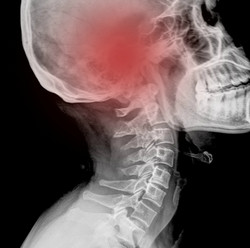Non-invasive intracranial pressure measurement
ICP is a vital sign in neurological diagnosis and monitoring because of its importance in intracranial dynamics. Patients suffering from neurological diseases or brain injuries undertake ICP measurement for prognosis and therapy. Raised ICP is the commonest cause of death in neurosurgical patients and is also extremely common in patients suffering from head injury. However, current methods for direct measurement of ICP are highly invasive and carry risks of tissue damage and infection. In answer to this, scientists on the EU-funded BRAINSAFE II(opens in new window) (Development of a novel autonomous non-invasive absolute intracranial pressure measurement device based on ultrasound Doppler technology) project set out to develop a non-invasive ICP meter for routine clinical care. The idea was to generate an autonomous, rapid and accurate device for quantitative ICP measurement without the need for calibration. To this end, the consortium developed an enhanced ultrasound Doppler system, which utilised optimised signal processing algorithms and novel pressurisation. It exhibited enhanced resolution and accuracy in collecting both intracranial and extracranial ophthalmic artery (OA) blood flow measurements. In addition, it incorporated an automatic electromechanical ultrasonic transducer spatial positioning system that eliminated the need for highly trained personnel and ensured the widespread application of the device. Most importantly, measurements could be performed shortly after the injury without the need for surgical operations to collect data. From a clinical perspective, the BRAINSAFE II device is regarded as a breakthrough in clinical diagnostics. Its implementation is expected to improve the diagnosis and treatment of neurosurgical and neurological diseases, thereby minimising disability in the millions of individuals who have suffered head injury. The non-invasive innovative BRAINSAFE II technology could also be used in other instances where ICP monitoring would improve care such as in glaucoma and Alzheimer’s disease.







